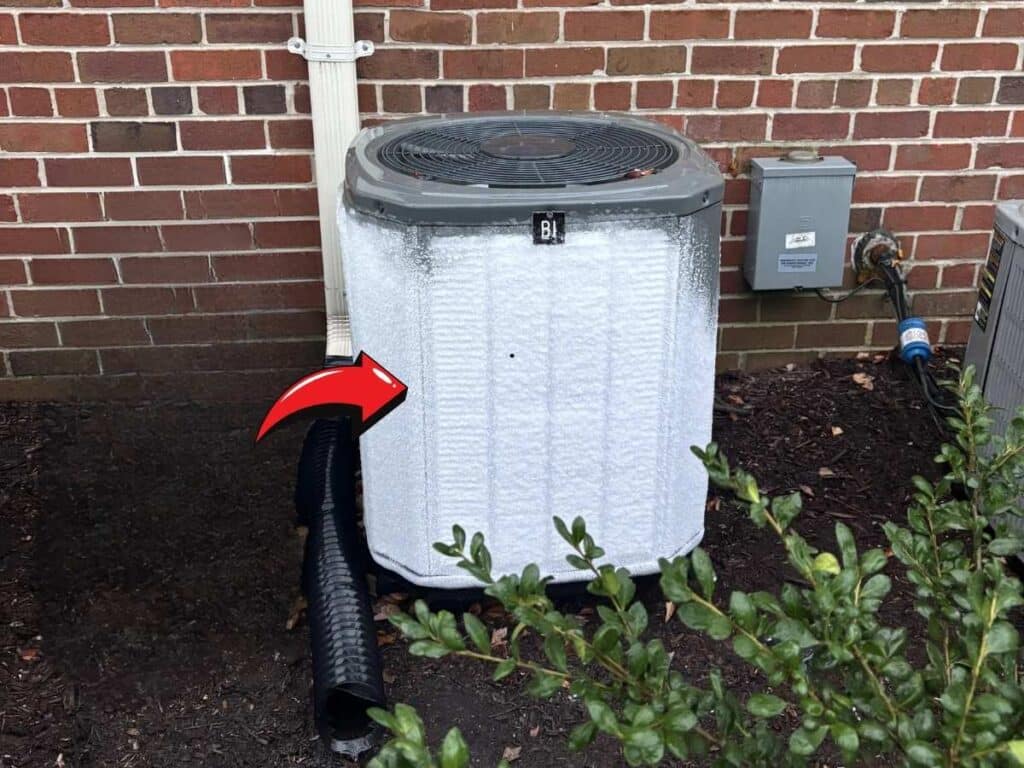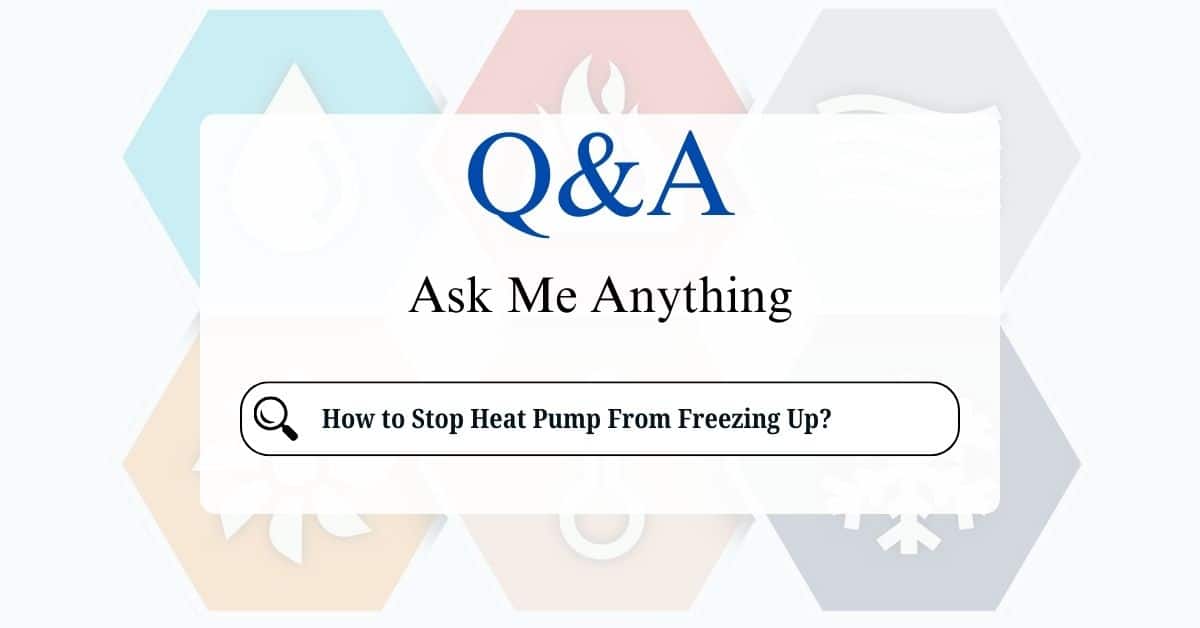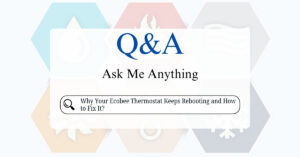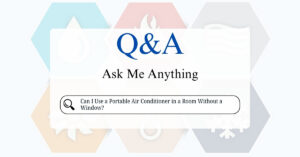Heat pumps are workhorses, providing efficient heating and cooling year-round. But when winter hits, they can sometimes encounter a frosty foe: ice buildup on the outdoor unit. While a little frost is normal, excessive ice can hinder performance and even damage your system. This friendly guide will explain why heat pumps freeze, how their defrost cycle works, and, most importantly, how to prevent excessive freeze-up.
Why Heat Pumps Frost Up (A Quick Explanation)
In heating mode, your heat pump extracts heat from the outside air. As the outdoor coil absorbs this heat, it gets cold. When the coil’s temperature drops below freezing (32°F or 0°C), moisture in the air can condense and freeze onto the coil, forming frost or ice. This is similar to how frost forms on your car windshield on a cold morning.
The Heat Pump’s Built-in Defrost Cycle
Heat pumps are designed with an automatic defrost cycle to combat this. Here’s a simplified breakdown:
- Reversing the Refrigerant Flow: The heat pump temporarily reverses its operation, switching to cooling mode. This sends warm refrigerant through the outdoor coil, melting the frost.
- Activating Auxiliary Heat (Often): To prevent a blast of cold air indoors during defrosting, most heat pumps activate their auxiliary or emergency heat (usually electric resistance heating).
- Short Duration: The defrost cycle typically lasts only a few minutes.
Why Excessive Freeze-Up is a Problem
While the defrost cycle handles normal frost, excessive ice buildup can cause several issues:
- Reduced Heating Efficiency: A thick layer of ice insulates the coil, preventing it from effectively absorbing heat from the outside air. This forces the heat pump to work harder and use more energy.
- System Damage: Excessive ice can put stress on the coil and other components, potentially leading to damage.
- Complete System Failure: In severe cases, excessive ice can completely block airflow, causing the system to shut down.
How to Prevent Excessive Heat Pump Freeze-Up

Here are the key steps to prevent excessive ice buildup on your heat pump:
1. Check the Airflow
- Inspect the Air Filter:
- Dirty filters restrict airflow, causing the system to overwork and ice to form.
- Replace or clean the filter monthly during heavy use.
- Clear Obstructions:
- Ensure vents and registers are open and unblocked by furniture or curtains.
- Clean the outdoor unit to remove debris like leaves, dirt, or snow.
2. Ensure Proper Drainage
- Inspect the Drain Line:
- A clogged condensate drain line can cause water to pool and freeze.
- Use a wet/dry vacuum or pipe cleaner to remove blockages.
- Check Surrounding Area:
- Ensure the ground around the heat pump slopes away from the unit to prevent water pooling.
3. Monitor the Defrost Cycle
- Check if the Defrost Cycle Activates:
- Heat pumps enter defrost mode automatically to remove frost or ice from the coils.
- During defrost, the outdoor fan stops, and the system temporarily switches to cooling mode to heat the coils.
- Test the Defrost System:
- If frost persists, the defrost control board, sensor, or reversing valve may be faulty.
- Contact an HVAC professional for repairs.
4. Inspect Refrigerant Levels
- Low Refrigerant Levels:
- Insufficient refrigerant reduces heat transfer, leading to freezing.
- Look for signs of a refrigerant leak, such as frost on the refrigerant lines or a hissing noise.
- Only a licensed HVAC technician can diagnose and recharge refrigerant.
5. Clean the Coils
- Dirty Coils:
- Dust and grime on the outdoor coils reduce heat absorption, causing freezing.
- Turn off the system and use a garden hose to gently rinse the coils.
- Avoid high-pressure water, which can damage the fins.
6. Maintain Adequate Clearance
- Keep the Outdoor Unit Clear:
- Ensure at least 2 feet of clearance around the heat pump for proper airflow.
- Trim shrubs, remove snow, and clear debris regularly.
7. Check the Thermostat Settings
- Avoid Extreme Settings:
- Set the thermostat to a moderate temperature to prevent the system from overworking.
- Use the “Auto” fan setting instead of “On” to allow the heat pump to cycle properly.
8. Prevent Ice Formation
- Install a Wind Barrier:
- Use a fence or shrubs to shield the heat pump from strong winds that can exacerbate freezing.
- Ensure the barrier is far enough away to allow airflow.
- Pour Warm Water on Ice:
- If ice forms on the outdoor unit, turn off the system and pour warm (not hot) water to melt it.
- Do not use sharp objects to chip away ice, as this can damage the coils.
9. Regular Maintenance
- Schedule annual HVAC maintenance to keep the system running efficiently.
- Professional tasks include:
- Inspecting and cleaning the coils.
- Checking refrigerant levels.
- Ensuring the defrost system is functioning properly.
What to Do If Your Heat Pump is Frozen Solid
If you find your heat pump completely encased in ice:
- Turn Off the Heat Pump: Turn off the heat pump at the thermostat.
- Turn Off the Breaker (Recommended): For added safety, turn off the power to the outdoor unit at the circuit breaker.
- Allow Natural Thawing (Best Option): If possible, the safest option is to let the ice melt naturally. This may take several hours, depending on the weather.
- Use Warm Water (If Necessary): If you need to speed up the process, you can carefully pour warm water over the ice. Never use boiling water or sharp objects, as they can damage the unit.
- Do Not Chip Away Ice: Avoid using tools to chip away the ice, as this can damage the delicate coil fins and refrigerant lines.
By following these tips, you can significantly reduce the risk of excessive freeze-up and keep your heat pump running efficiently all winter long. Remember, regular maintenance and prompt attention to any potential problems are key to preventing costly repairs and ensuring long-lasting performance.






